1961-64 Corvairs have an internal gutter and drain hole in the rear end of the trunk. The reason for this design is unclear, but if water does get into this area of the trunk, it is supposed to drain out through the drain hole. However, this drain hole is often blocked and therefore water could accumulate in this area and cause rust. This post will show you the location of the drain and discuss how to make sure it is open.
In the following discussion, right and left refer to the passenger and driver side of the car, respectively.
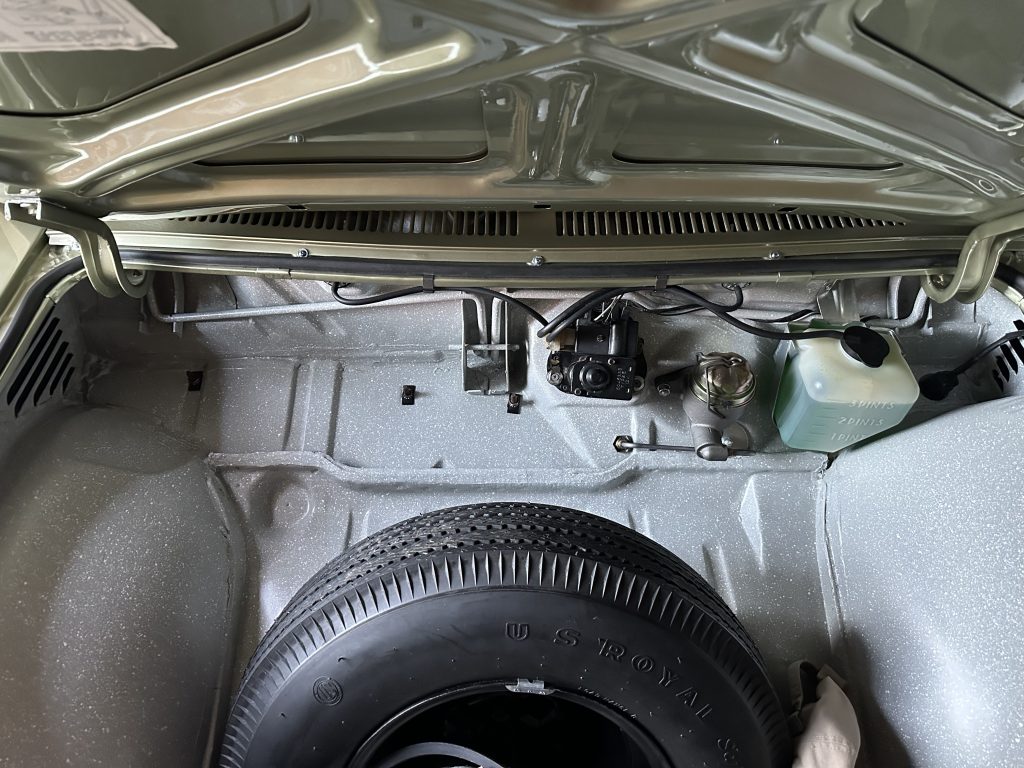
This photo shows the internal gutter at the rear end of the trunk. It spans the area between the rear ends of the wheel wells, just in front of the washer reservoir and master cylinder on the left side of the car. The drain is located just to the right of center – it’s that small triangular indentation you see just behind the gutter fold.
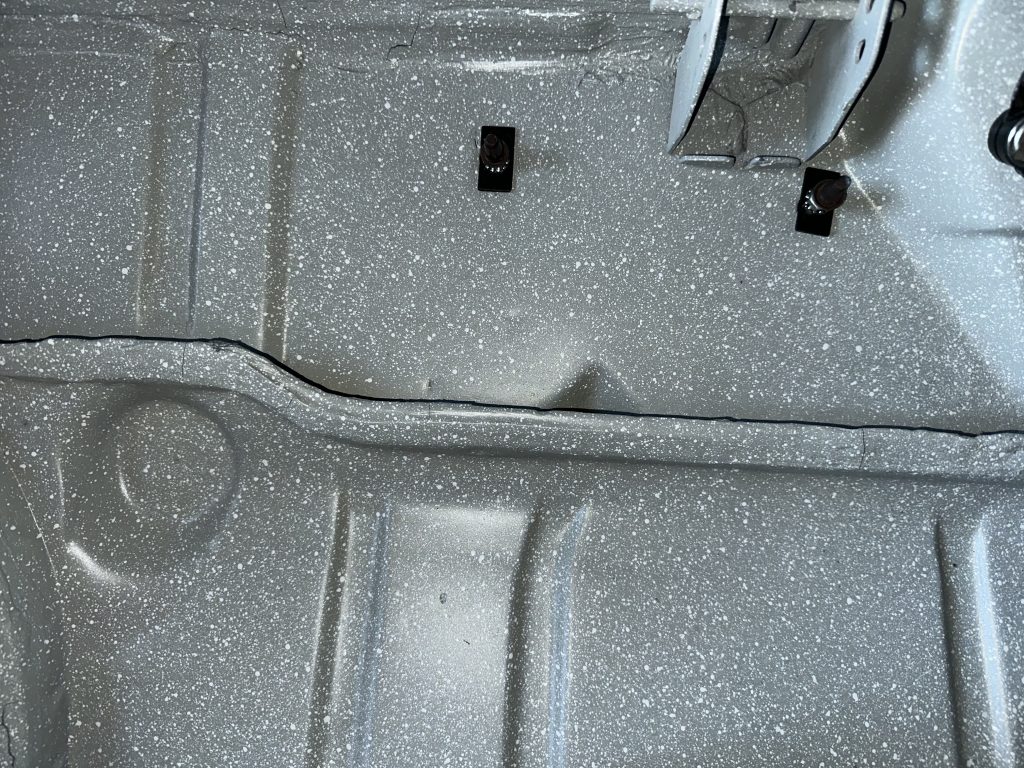
This is a closer view of the gutter with the triangular indentation that identifies the drain location.
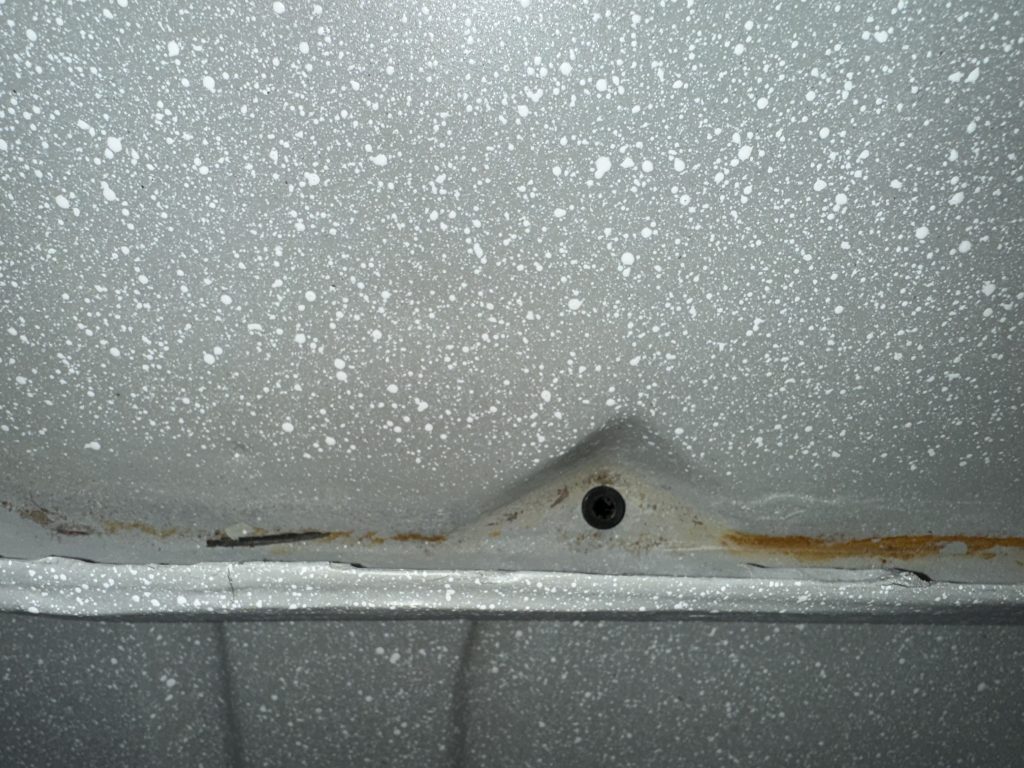
This is a view of the gutter and drain from above. The drain is that small black plastic thing. It’s hard to see in this photo, but it has a hole down its center.
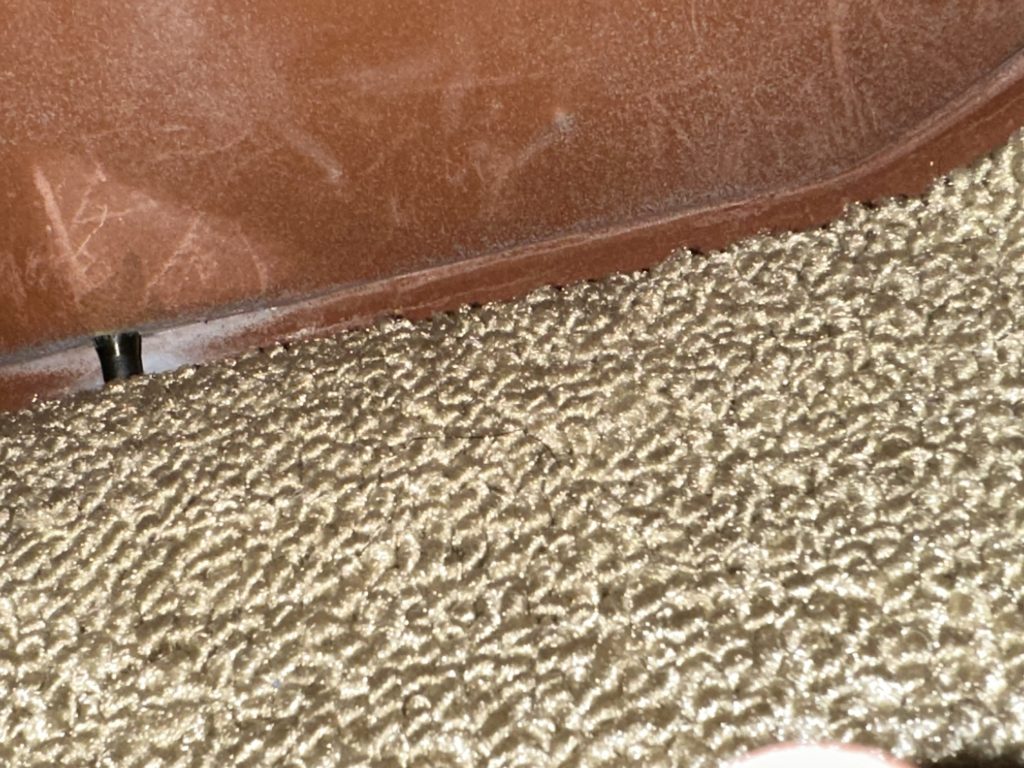
This is a view from inside the car. Looking up, under the dash, at the top edge of the carpet, you should be able to find the triangular area. In this car (Glenn Corvair) the plastic drain is clearly visible, but in most cars this area will be obscured by seam sealer.
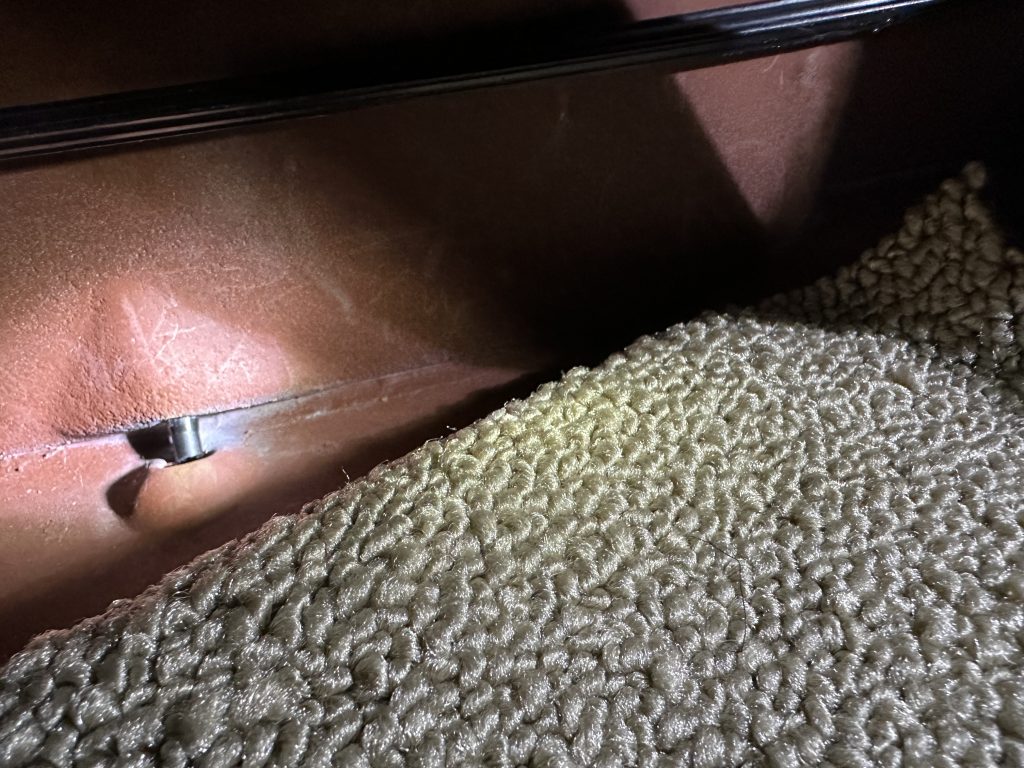
In this view the carpet has been folded back to better reveal the drain. Note that the upper (trunk) and lower (floor) panels are NOT connected; the plastic drain is the only part bridging this gap. What is not clear from this photo is that the plastic drain is just barely long enough to pass through the hole in the lower (floor) panel. Therefore, it is critical that the drain be unobstructed or else water will be directed into the passenger compartment.
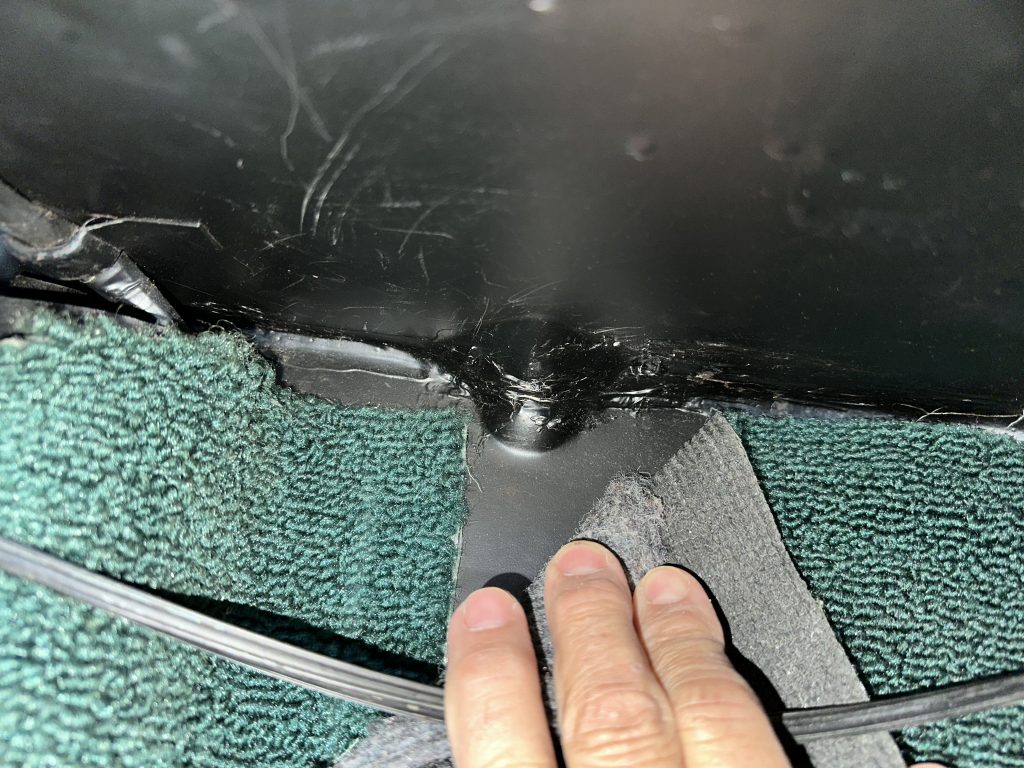
This is the more typical appearance of this area from inside the car. The seams have been filled with seam sealer. In this case, it is important to insure that the drain hole is not plugged with seam sealer.
Check the status of the drain hole by attempting to pass a stiff wire through from the trunk. It should pass freely. Leaving the wire in place for a moment, check inside the car to make sure the wire has not entered the passenger compartment.
If your drain plug is defective or missing, you can order a replacement from Clark’s Corvair Parts.



